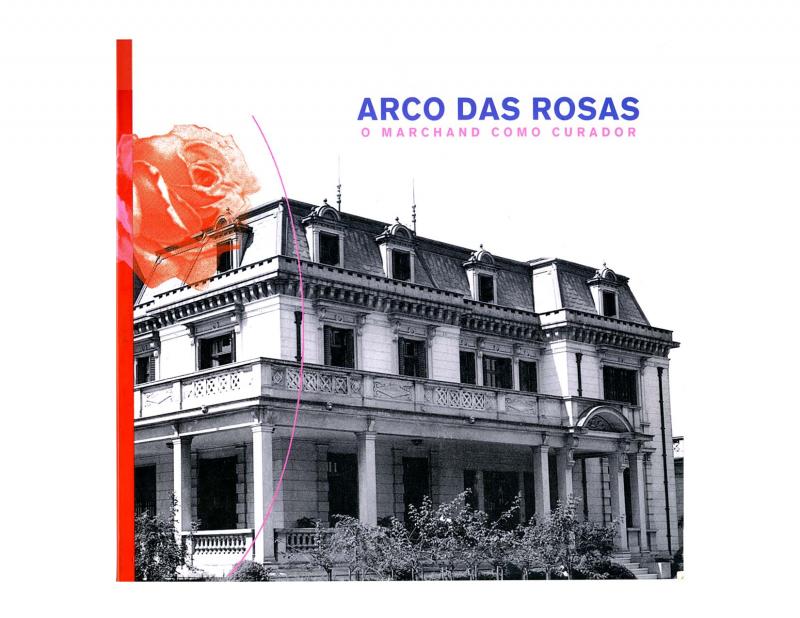In his letter, Maluf doubts whether Concretism in Brazil originated with the 1952 “Ruptura manifesto” or even with the artists associated with the group, instead of being part of a “morphic field [of concretism], among other collectives that have arisen” from that time on. Moreover, he offers corrections to several issues and dates, as well as related anecdotes, such as the debates that took place at the “Papagaio Verde”—a bar on Sete de Abril Street, across from the MASP (Museu de Arte de São Paulo). Maluf requests that an addendum (incorporating his data) should be published with the new book, concluding that “the greatest possible number of testimonies and documentation can only benefit the reconstitution, still in progress, of a period as rich as the constructive movement in Brazil.”
Antônio Maluf (1926–2005) studied painting with Waldemar da Costa (1904–82) and Samson Flexor (1907–71) as well as Industrial Design at the IAC (Instituto de Arte Contemporânea) at MASP, an institution cited in his letter. In 1951, he won a contest to design the poster promoting the first Bienal de São Paulo, where he encountered constructivism through the (awarded) work of Max Bill. Practicing as a designer for important architects from in the 1960s–70s, he created glazed-tile murals for banks, attorneys’ offices, private residences such as a swimming pool in the Jardins residential area, and a rooftop tennis court at the Sociedade Harmonia (both in São Paulo). His most well-known tile mural was made in tandem with Lauro Costa Lima in the Vila Normandia (1962) in the same city. He participated in major exhibitions of constructive and concrete art, including the I Exposição Nacional de Arte Abstrata (1953), the Primera Bienal de Arte Aplicada (1965), the I Bienal de Desenho Industrial (1968), the X and XI São Paulo biennials, the encyclopedic exhibition Projeto Construtivo Braileiro na Arte (1977), Tradição e Ruptura (1984), as well as Bienal Brasil Século X (1994).
Aracy Amaral (b. 1930) is an art historian, critic, and curator who served as director of the Pinacoteca do Estado de São Paulo (1975–79) and of the MAC-USP (Museu de Arte Contemporânea da Universidade de São Paulo, 1982–86). She is currently a professor of Art History FAU-USP. She is the author of many books about Brazilian art, including Tarsila sua obra e seu tempo (São Paulo: Editora 34/EDUSP, 2010); Textos do Trópico de Capricórnio – artigos e ensaios (1980–2005) in three volumes (São Paulo: Editora 34, 2006); Arte para quê? A preocupação social na arte brasileira 1930–1970 (São Paulo: Nobel, 2003); and Artes plásticas na Semana de 22 (São Paulo: Perspectiva, 1970).
The text cited in Maluf’s letter accompanied an exhibition of the same name at MAM-SP that opened just a few weeks later, running from October 2–December 20, 1998. This document belongs to the Adolpho Leirner Archives at the Museum of Fine Arts, Houston, contributed by the collector himself. [For more on Antônio Maluf, see in the ICAA Digital Archive “Apresentação” (doc. no. 1110834) by Lourival Gomes Machado; and “Arco das Rosas: Marchand como curador” (doc. no. 1111315) by Celso Floravante].
[For more by Aracy Amaral, see her essays “Arte na rua” (doc. no. 1110675); “Arte da América Latina: questionamentos sobre a discriminação” (doc. no. 776879); “Arte no Brasil” (doc. no. 1110373); “Aspectos do não-objetualismo no Brasil” (doc. no. 1111221); “Brasil na América Latina: uma pluralidade de culturas” (doc. no. 776834); and “Críticos de América Latina votan contra una bienal de Arte Latinoamericano” (doc. no. 1079493), among many others].








